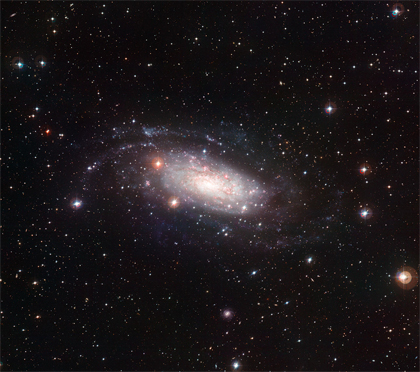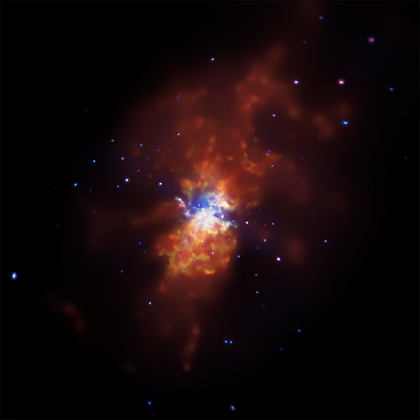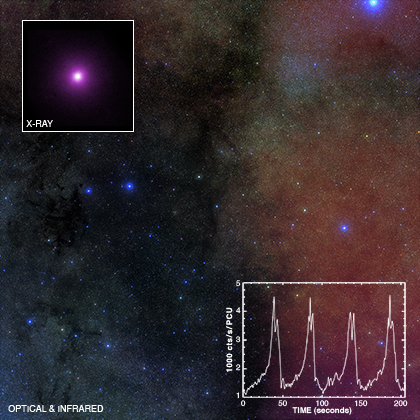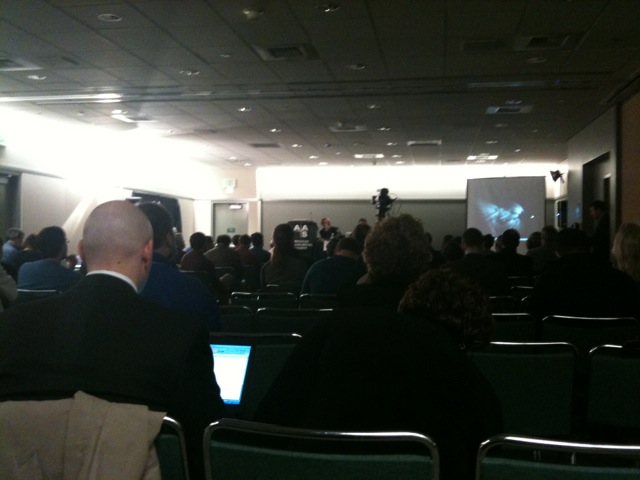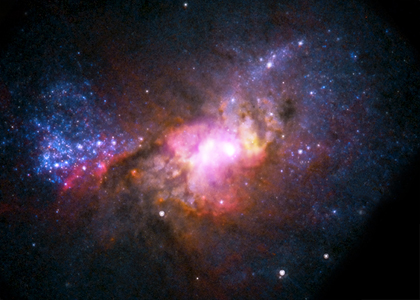"Hidden Treasures" Found
Submitted by chandra on Thu, 2011-02-03 09:02Every so often, our talented team gets to play with other colors in the crayon box -- that is, wavelengths outside the regime that Chandra observes. We do this for a number of reasons, not the least of which is that something great usually happens.
